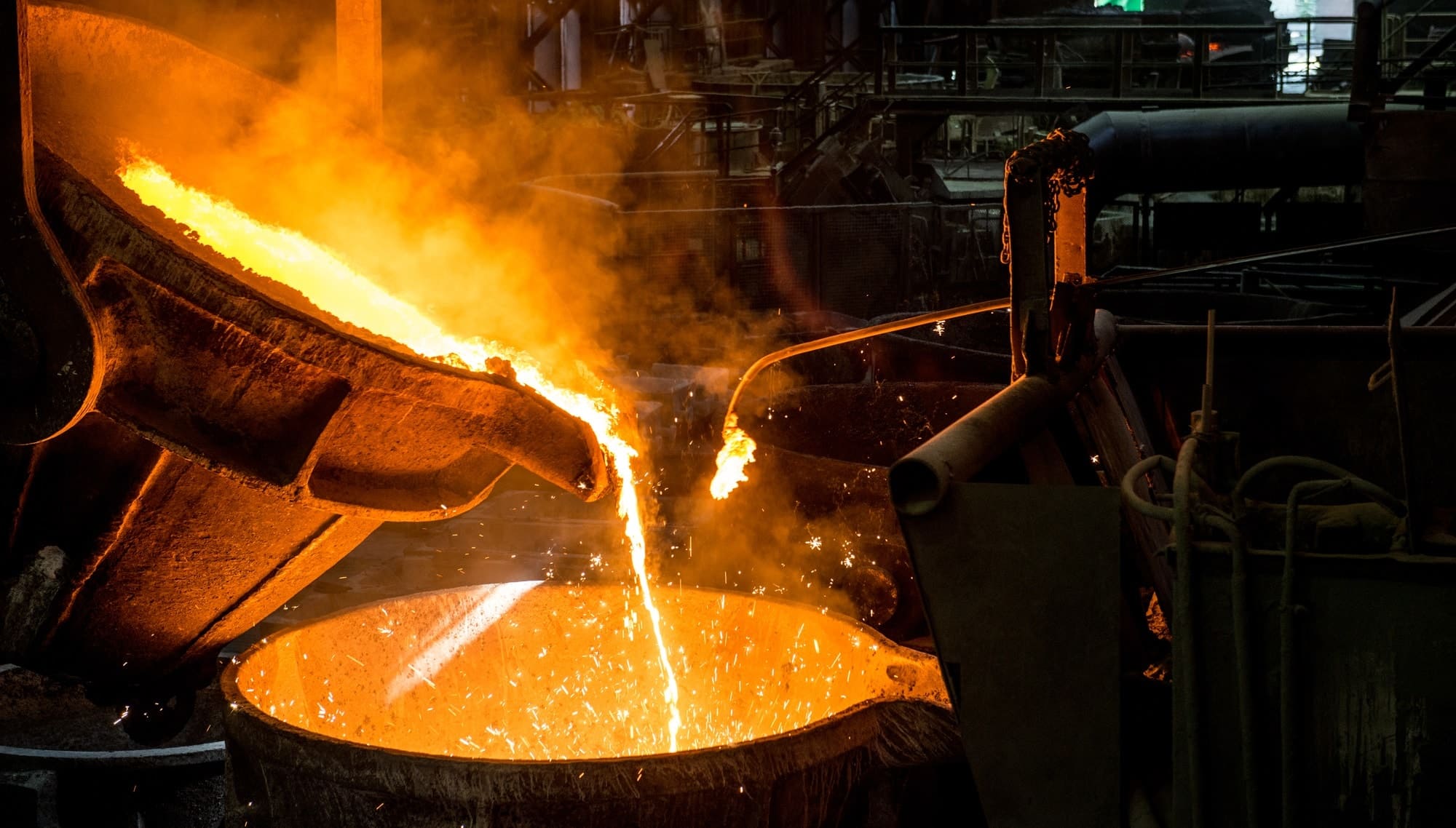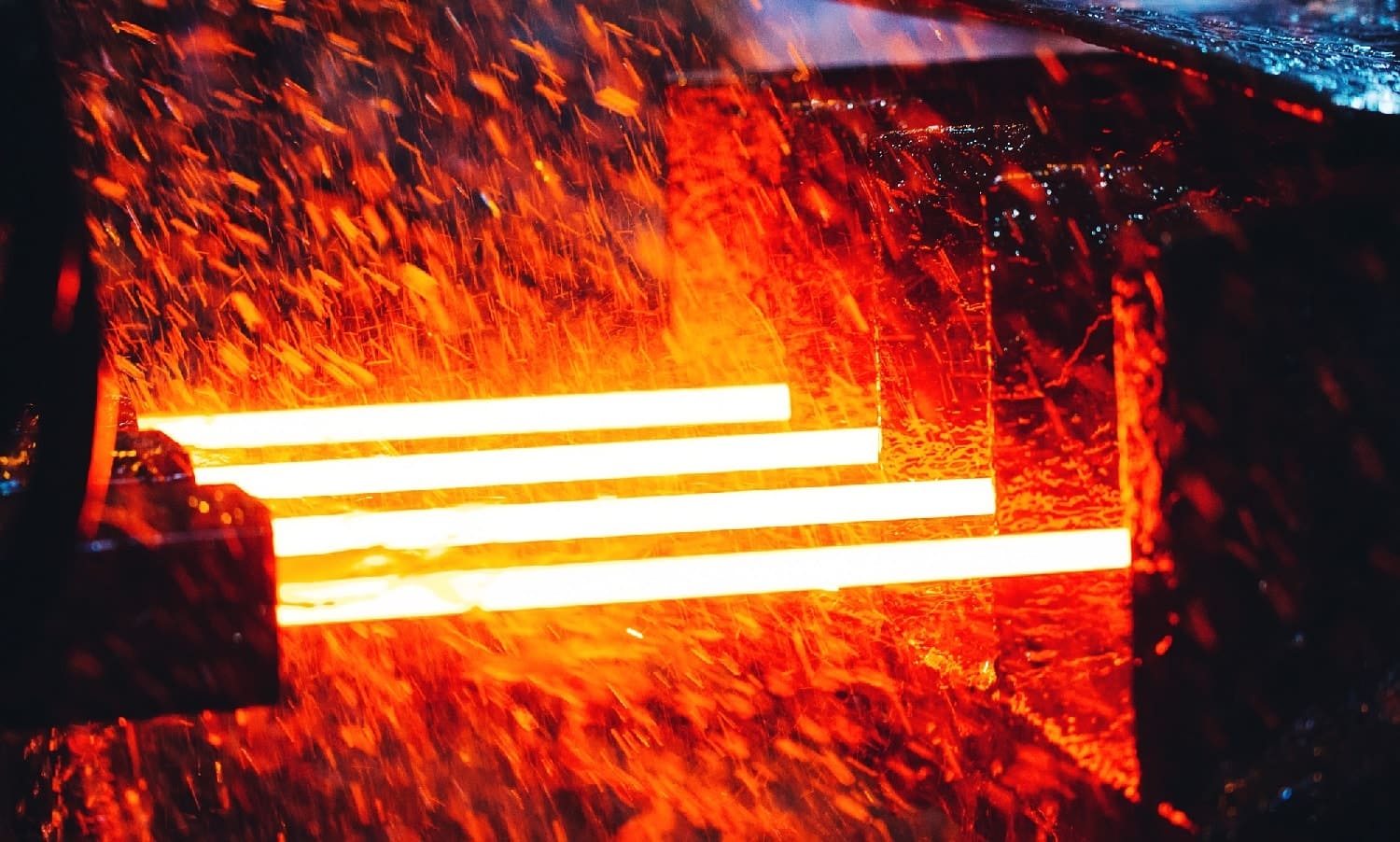Steel-smelting in the metallurgical kitchen is performed in a similar fashion: raw materials (the charge) are added into a huge "pot" and "boiled" at high temperatures according to a certain kind of technology (the recipe). At the same time, the right temperature is achieved by the use of gas or electricity.
At the moment, there are three primary, industrial ways of smelting steel in the world:
- the OHF process;
- the BOF process;
- the electro-metallurgical process.
History of steel smelting
Humankind learned to make iron in the Middle Ages. However, up to the middle of the 19th century, it was in small amounts of low-quality materials. As a rule, it was produced in bloomery furnaces and refined in forges, where the makers obtained piece goods. Remarkably, remains of medieval bloomery furnaces (also known as hammer workshops) have been found on the territory of modern Ukraine. Most notably, they were located in the western part of the country, which is not a centre of the steel industry today.
The technologies used before the 19th century to manufacture iron products had one significant drawback: either very soft iron or fragile steel made of iron was produced in the forges. Such materials could not be used in their pure state, as the products quickly dulled or could be easily broken.
Today, elasticity is a known property of any iron alloy. It can only be achieved when a clear crystal structure has been generated in the melt. The medieval technologies were not capable of melting metal with the right proportion of iron and carbon. It required what was, at the time, an unattainable temperature of 1,450 C°.
The Industrial Revolution resulted in the rapid growth in demand for new materials for construction and weapons: materials that were robust, durable and suitable for mechanical processing.
As a result, all three modern ways of smelting steel came into being in the 19th century.
Open-hearth process: Benefits and upgrades
Up to the middle of the 20th century, open-hearth furnaces were the main technology used in steel-smelting. First built by Frenchman Emile Martin in 1864, it had the following advantages among others: the ability to include steel scrap in the charge (there was a lot of it due to the active development of railways) and a wide variety of quality steel grades that could be produced with a long smelting time (up to 13 hours).
The first open-hearth furnaces in the territory of modern Ukraine were built by Welshman John Hughes in 1879. According to various estimates, by the middle of the 20th century, between 50% and 80% of the world's steel was smelted using this technology.
However, due to long smelting times, the need for constant external heating of furnaces, increases in natural gas prices, unsustainable processes and other issues, open-hearth furnaces gave way to new technologies.
Existing open-hearth plants predominantly do not use classic OHF but the so-called twin-hearth steel-smelting mills. They combine elements of both basic-oxygen and open-hearth technologies. Generally speaking, these are two interconnected open-hearth furnaces that allow the heating of the molten iron with oxygen from the inside and not just heating of the outer part of the furnace with natural gas. This provides significant savings in resources and the ability to reduce the duration of a single heating down to three to four hours.

BOF process: In search of oxygen
The forerunner of the BOF steel-smelting process was the Bessemer process, which was developed before the open-hearth one. Englishman Henry Bessemer received a patent for this invention of his in 1856. It produced hot metal with the help of atmospheric air used to reduce carbon content. At the same time, the steel was stirred with nitrogen, which reduced the temperature and partially entered the steel composition in the form of impurities. Because of this factor, among others, the method is not widely used. A lower melting-point temperature limited the use of scrap metal, which led to the need for high-quality raw materials, like cast iron produced from iron ore without harmful impurities. Bessemer was aware of this disadvantage, but in those days it was nearly impossible to get large amounts of pure oxygen. Bessemer furnaces were used on the territory of modern Ukraine up to 1983.
In 1878, another Englishman, Sidney Gilchrist Thomas, improved on the invention of his countryman. Thomas furnaces made it possible to remove some harmful impurities like phosphorus from the melt. For this reason, the technology became widespread in Belgium and Luxembourg, where high-phosphoric iron ore was mined.
However, the quality of steel in both technologies remained low compared with the OHF until the early 1930s. That's when attempts to introduce oxygen-stirring started. Liquid steel was not stirred with air in Bessemer converters but with pure oxygen produced in cryogenic plants. It is acknowledged that one of the first experiments in the use of this technology was conducted by Mykola Mozgov in Kyiv at the Bolshevik plant. At the same time, trial heats were performed in Germany and Austria. However, the Second World War slowed down technological progress in the steel industry.
It was only after the end of the war, with the development of cryogenic technologies, that oxygen converters started supplanting the open-hearth process. The first industrial plants of this type were launched in 1952. The BOF steel manufacturing process turned out to have a higher capacity with lower costs. For some time, the outdated Bessemer plants were revamped using this technology, although building completely new and more advanced production lines gained more and more popularity.
Modern basic oxygen furnaces are pear-shaped vessels made of steel. Inside they are lined with special refractory materials. Their tuyeres are immersed from the top to feed pure oxygen with high pressure. This gas burns carbon in steel to the required level.
Electric arc furnaces: The power of current
By the 19th century, it became known that not only gases but also direct-voltage current can reduce metals from oxides and also melt them with an electric arc. However, powerful sources of electricity were unavailable, which hindered the development of electric-furnace steel-smelting technology.
It was not until the 1930s that more potent power plants began to emerge, making it possible to think about the mass introduction of electric steelmaking. It started with non-ferrous metals. Later on, the technology was introduced to the iron and steel industry. One of the most prominent examples of electric steelmaking introduction was in the city of Zaporizhia. The first turbines of Dnipro Hydroelectric Station were launched here in 1932. The electric steelmaking enterprises producing aluminium, titanium, ferro-alloys and special steel emerged one-by-one here.
Today, electric-arc furnaces (EAF) are used not only for the smelting of special steels but also for commercial grades of steel. They usually produce square billets and long products. Three huge graphite electrodes of alternating or direct current are immersed into the furnace, filled with charge. An electric arc is generated creating high temperatures inside the furnace and melting the scrap. EAFs usually form the basis for the so-called mini-mills, i.e. small metallurgical enterprises with an annual capacity of 0.5-2 million tonnes of steel. They are common in countries with affordable electricity rates and large sources of scrap.

As in basic oxygen converters, the smelting time in electro-metallurgy is fairly short and takes 40 to 60 minutes. In the early development stages of these technologies, speed was also the main drawback and there were difficulties with producing a wide variety of steel grades. During the few hours of melting in OHF, the fluxes, deoxidation agents, alloys were gradually introduced into a charge and it influenced the properties of the material. Meanwhile, factory laboratories had time to analyse the achieved product and give recommendations to steelworkers. Nevertheless, this advantage of OHFs was nearly negated after the introduction of secondary metallurgy. The steel from converters and EAFs is refined in vacuum degassers and ladle furnaces to the required condition and chemical composition and after that is transferred to continuous casting machines.
Raw materials: How to find the right proportions for the charge
All of the three main smelting processes, at their completion, provide one and the same product, i.e. liquid steel. Its manufacturing involves various raw materials in different proportions.
About 33% of the typical OHF melting charge is black metal scrap. The rest is hot metal from blast furnaces. In some cases, the share of scrap would be up to 66%. This is the so-called scrap-melting process, which was actively used in OHFs at machine-building or pipe plants. After all, the processing of metal products was associated with a vast amount of steel waste. However, the more scrap is used, a higher melting temperature is required. The necessary heat level for OHFs was provided via external heating with natural gas.
Basic oxygen furnaces can’t be provided with external heating. Therefore, the scrap share in the charge here is significantly lower, about 15-25%. Otherwise, the melt would be too cold. In addition, this method of steel-smelting started to spread rapidly in parallel with continuous casting, which led to a reduction in scrap utilisation in steel mills. To avoid buying it from third parties, it was necessary to increase the share of hot metal.
Electric-arc furnaces do not have the issue of reaching the right temperature. Therefore, up to 100% of their charge can be generated from ferrous scrap. Nevertheless, some modern EAFs were built to replace the OHFs as part of integrated steel plants with existing blast-furnace production. Therefore, their design provides for the use of up to 40% of hot metal in the composition of the charge. It should be noted that the countries where EAFs are common have their own specific factors at play. For example, about 70% of US steel is melted this way. This can be explained by the high level of scrap production: Americans often change cars and household appliances and the machine-building industry is developed in this country. About 68% of the steel in Turkey is electrically manufactured, although there are much fewer sources of scrap. Therefore, this Middle East country is the world's largest importer of scrap. Steel smelting in Ukraine is performed via all of the three methods described. According to www.worldsteel.org, 1.87 billion tonnes of steel were produced around the globe by the end of 2019. Nearly 72% of it comes from BOFs, just under 28% was received from EAFs, and only 0.3% from OHFs. The full list of countries performing steel-smelting can be found on the website of the World Steel Association.
In any case, it's safe to say that in a modern steelmaker's kitchen that adheres to the technology (recipe) and the good preparation of components (raw materials), a quality dish (that is steel) can be cooked, no matter in what kind of furnace it is cooked, electric or gas.
The fact that Ukrainian metallurgists are good at it is confirmed by the geography of metal products export destinations, ranging from their closest neighbours to the farthest points of the globe.
